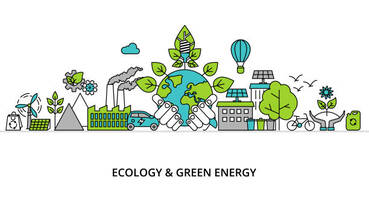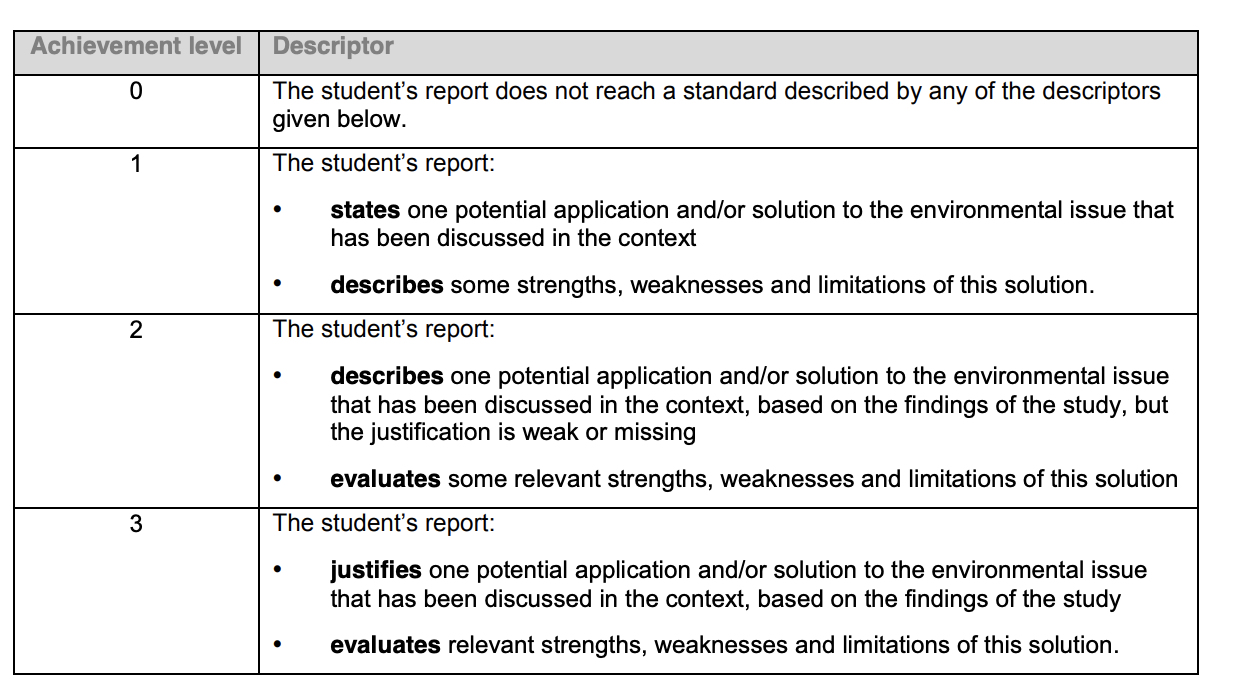application
 image from istock
image from istock
This criterion assesses the extent to which you identify and evaluate at least one way to apply the outcomes of the investigation in relation to the broader environmental issue that was identified at the start of the project.
Applications (3)
You are expected to reflect on the results of your study in the light of the broader environmental issue and suggest how your findings could be applied to address the environmental issue, or to propose a potential solution to one aspect of the issue. This criterion is therefore concerned with the synthesis of new ideas based on research findings. The suggestion might be based in the local context of the study itself, or might have relevance in a wider field, depending on the nature of the initial research question and the quality of the data obtained.
In order to score highly, you must JUSTIFY AND EVALUATE your suggestion rather than just stating a proposal.. Evaluate the strengths, weaknesses, and limitations of this solution in addressing the environmental issue
You are expected to reflect on the results of your study in the light of the broader environmental issue and suggest how your findings could be applied to address the environmental issue, or to propose a potential solution to one aspect of the issue. This criterion is therefore concerned with the synthesis of new ideas based on research findings. The suggestion might be based in the local context of the study itself, or might have relevance in a wider field, depending on the nature of the initial research question and the quality of the data obtained.
- Make sure you refer to your environmental issue
- Make the solution realistic.
- No outrageously expensive solutions
- No overly simplistic solutions
- Relate your solution to the data you collected from the experiment.
- Justify your solution as to why it would be an answer to the conclusion of your experiment.
- Evaluate your solution.
- What are its strengths?
- What are its weaknesses?
- Why is this actually a realistic solution to the problem?
- Would it actually be successful? How do you know?
- Come to a conclusion about your solution being useful to solving the environmental issue.
In order to score highly, you must JUSTIFY AND EVALUATE your suggestion rather than just stating a proposal.. Evaluate the strengths, weaknesses, and limitations of this solution in addressing the environmental issue
- Explain your application/ solution and its relationship to the environmental issue AND your research
- Justify why this application/ solution is relevant to your experiment
- Evaluate the Strengths, Weakness, & Limitations of the application/solution
- Discuss the strengths of your application/ solution
- Discuss the weaknesses of your application/ solution
- Discuss the limitations of your application/ solution
- Reach a conclusion on how useful or relevant your solution is
Application Rubric

